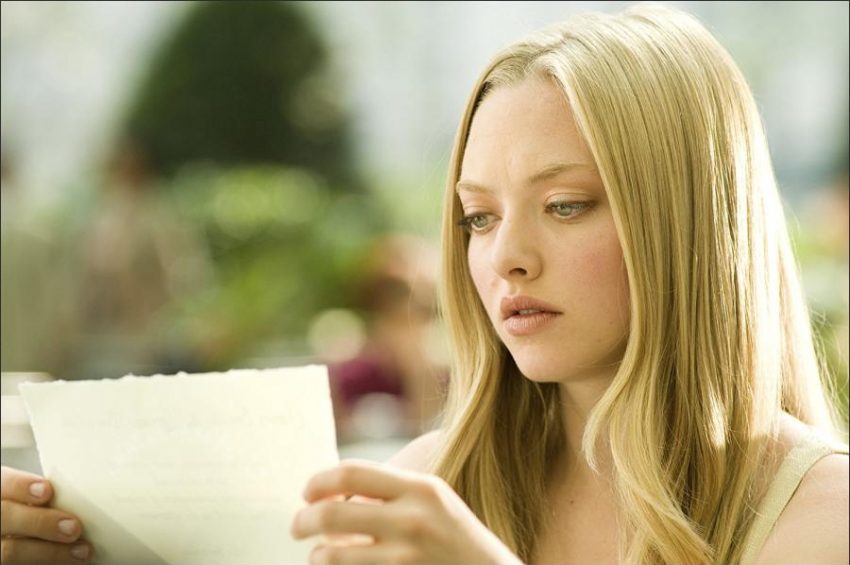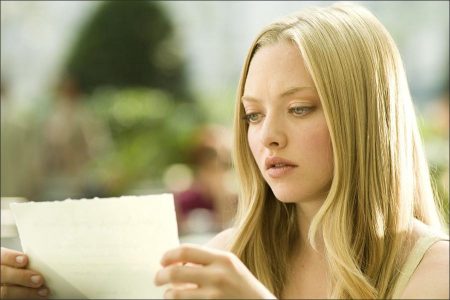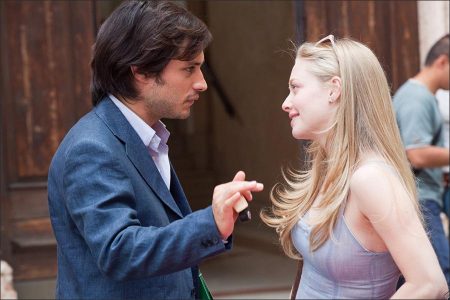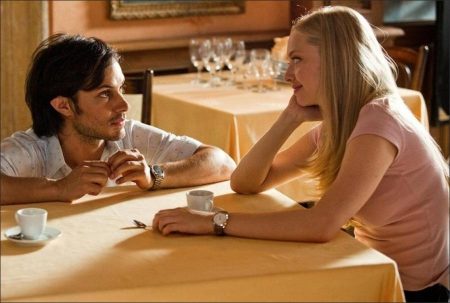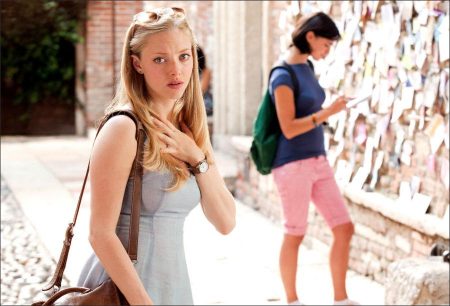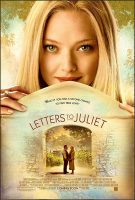All About Letters to Juliet
Finding the actor to play Charlie—someone who can play Redgrave’s grandson and be believable as the guy that would cause Sophie to think twice about her current relationship—was the hardest task during casting.
“Getting Chris was divine intervention and it was really late in the game when we decided on him” says Caroline Kaplan.
“Ultimately, it comes down to when the two actors are in the room and they’re playing off one another. When ‘it’ happens you know it immediately,” says Winick. “But as it turned out we auditioned scores of actors for Charlie in New York and London and it was a lot of work until we came across Chris Egan.”
Conversely, finding the actor for Lorenzo, Claire’s long-lost love, the filmmakers didn’t have to look too far. “Aside from being married to Vanessa, Franco Nero is a wonderful actor and capturing that moment where the two of them find each other after 50 years…well, it would be hard to create the intensity with someone other than Franco Nero. And the fact that the character and he are both Italian and we are shooting in Italy….well, it worked out perfectly,” says Winick.
The pair first met on “Camelot” in 1966 when director Joshua Logan cast the two young actors. “I think Vanessa is the best actress we’ve seen. Even though I’m her husband, these are not my words. These are the words of Tennessee Williams and Arthur Miller, and I agree with them,” says Nero. “I’ve worked with her about 10 times over 43 years and her talent is a gift that astonishes directors.”
For Winick, having the obvious chemistry between Redgrave and Franco was important, but shooting in Italy and having an Italian actor of his presence helped make the movie “just feel right.” Aside from his leads, Winick fleshed out the rest of the movie with nearly all Italian actors. All of the “secretaries de Guilietta” were cast out of Italy.
“I remember the book “Fellini Faces” (Italian director Federico Fellini) which has these great portraits of Italian character actors and my goal was to get those great looks which would immediately elevate the role of the secretaries. It runs the gamut from the extraordinarily beautiful Luisa Raneri (Isabella in the movie) to the great character face Luisa DeSantis (who plays Angelina).
“Anyway, I cast all these ladies and I had a rehearsal with them and it astounded how much energy they created when all together and all I could think was, ‘I wish I had a camera rolling,’” recalls Winick of his pre-production time. Once the casting was completed in early June, the focus was now on the logistics of making the movie and in particular trying to pull off something not thought possible: having the city of Verona closing down their main tourist attraction—Casa di Giulietta—for two days to allow filming in the courtyard. It took almost three months of negotiating with the city and for them to realize the long-term tourism benefit would be worth the couple days of pain (i.e. tourists not being able to enter the courtyard).
Production designer Stuart Wurtzel altered the location (the entry way to the courtyard was a white wall covered in graffiti) by adding a faux brick covering to the walls with brick columns and in general made it less “touristy” and more representative of what it might have been like in Juliet’s time.
“The colors of Italy are the colors of the earth and it’s gorgeous in every direction so my instinct was to ‘dial it back’ so as not to intrude on the story,” says Wurtzel.
Winick’s first concern was to make sure they weren’t creating a postcard of Italy where “the background becomes the foreground.”
“As long as we (Wurtzel and director of photography Marco Pontecorvo) realized that the value of the movie is the realism of the emotional stuff, the beauty shots will support the story, not the other way around,” says Winick. Other locations around the Verona area included the spectacular estate, Villa Arvedi (scene for where Claire meets one of the many “Lorenzos”), the small village of Soave (famous for it’s white wine) which had a more “Southern Italian” look to it as well as an establishing shot of Sophie walking the streets of Verona in front of the 2,000 year-old Arena, home to the most famous outdoor opera season in the world.
The production also traveled to scenic Lake Garda (one of the famous three northern Italian lakes) before moving the production south to Siena. From there shooting was done all over Tuscany, and for 10 days the Argiano vineyards (one hour south of Siena) where the world-famous Brunello wine is produced. Two days were spent in the historic ancient city of Siena amidst the steep narrow streets that all feed down to the his historic Piazza del Campo where the production “stole” a shot of Sophie and Charlie crossing the vast public square while thousands of tourists were too taken with the historic surroundings to notice the movie camera.
The Borgo Scopeto Hotel, formerly a family estate for centuries, was the location for the interior and exterior hotel scenes where Sophie, Claire and Charlie based out of for the Tuscany excursion. Nestled amidst vineyards and olive groves about 20 minutes from Siena, the hotel was where the Italian portion of the movie wrapped on August 13, 2009. The day after the actors and key crew flew to New York City for four days of filming. Bryant Park and Times Square were the two key exterior locations and Victor’s restaurant was located in an empty building in SoHo.
“There are certain movies where the location becomes a character,” notes Winick. “Growing up in New York on Woody Allen films, you really get a sense of that. “And I feel the same way about this movie and Italy. While you can recreate anything anywhere, being in Italy gets inside of you and it comes out in the performances and the colors of the earth and the buildings. There’s nowhere quite like it.
For Christopher Egan, the matter of getting in the “mood” didn’t prove to be too far a stretch: “Amanda and I were doing a scene in an outdoor café in Siena, eating some ice cream, and then we spent the rest of the day shooting scenes of us walking around the city. Even though we’re doing multiple takes and surrounded by a big crew, it’s hard not to feel romantic. The sights and the language start to overwhelm your senses.”
“It’s the most extraordinary county,” says Redgrave. “The Italy I knew as a child is pretty much gone and most of the tourists go to the same regions, but I think this movie will show them a little more than what they thought Italy was about.“
Letters to Juliet (2010)
Directed by: Gary Winick
Starring: Amanda Seyfried, Marcia DeBonis, Vanessa Redgrave, Gael Garcia Bernal, Franco Nero, Luisa Ranieri, Marina Massironi, Lidia Biondi, Milena Vukotic, Luisa De Santis, Vanessa Redgrave
Screenplay by: Jose Rivera, Tim Sullivan
Production Design by: Stuart Wurtzel
Cinematography by: Marco Pontecorvo
Film Editing by: Bill Pankow
Costume Design by: Nicoletta Ercole
Set Decoration by: Alessandra Querzola
Art Direction by: Stefano Maria Ortolani, Saverio Sammali, Eugenio Ulissi
Music by: Andrea Guerra
MPAA Rating: PG for brief rude behavior, some language and incidental smoking.
Distributed by: Summit Entertainment
Release Date: May 14, 2010
